Behind Every Strong Brand, There’s Strong Support.
Supporters Marketing is more than a service provider — we’re your trusted growth partner. From startups to established enterprises, we stand by your side at every stage of your business journey. Our goal is simple: to help you grow, perform, and stand out. With reliable, results-driven digital marketing solutions trusted by businesses across the Globe, we operate as an extension of your team, committed to your vision, your goals, and your long-term success. Businesses trust, we stand behind your brand like a dedicated team rooting for your success.
Our Success Partners
We collaborate with the industry’s leading tools and technologies to craft solutions that empower you to thrive in today’s competitive world.





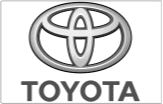
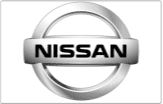
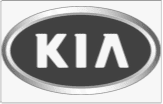

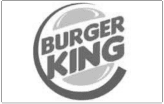














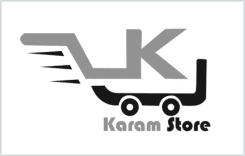

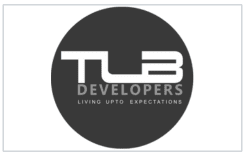
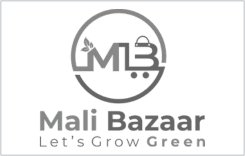



Who We Help
Ambitious Brands. Growing Businesses with Digital Marketing. Real People, Real Results in the USA.
We’re not just your marketing agency — we’re your biggest supporters. Our mission is to amplify your voice, accelerate your growth, and celebrate your wins, every step of the way.
We understand that small and medium-sized businesses need more than just tools — they need strategy, creativity, and consistent support. That’s where we come in, offering Digital Marketing Services USA businesses trust to grow smarter and faster.
We provide tailored Digital Marketing Services USA startups and entrepreneurs rely on — including SEO, social media, content, and branding — to help you thrive in a competitive market.
We collaborate with driven small and medium-sized enterprises (SMEs) that are ready to grow smarter—not just bigger. Whether you’re launching a new product, rebranding, or aiming to lead your market, we’re here to support every step of your journey. From emerging startups to expanding businesses, we help you stand out, be heard, and achieve real results — all through results-driven Digital Marketing Services USA companies depend on.
Startups:
Every startup has a story. We help you tell yours effectively. From launching your brand to gaining traction in the market, we provide the strategy and execution you need to make an impact from day one — with the help of expert Digital Marketing Services USA teams.
Entrepreneurs:
You bring the vision—we bring the tools to bring it to life. Whether you’re building your first venture or expanding your portfolio, we work closely with you to turn ideas into successful brands. Our Digital Marketing Services USA are designed to give entrepreneurs the edge they need.
Business Owners:
Your business is your passion. Ours is helping it grow. We support business owners across industries with customized marketing strategies that attract customers, retain loyalty, and increase revenue.
We stay updated with industry trends through resources like Google Digital Garage and Moz Blog.
Ready to elevate your brand?
Book a free 15–30-minute consultation with our experts today.
Our Core Services
Strategic. Creative. Results-Driven.
We offer powerful Digital Marketing Services USA businesses rely on, designed to help SMEs grow smarter, faster, and stronger in today’s competitive market.
Strategic Marketing Solutions
This is about creating a customized marketing plan that aligns with your business goals. It involves researching your market, analyzing competitors, and identifying the best channels to reach your audience. It’s the big-picture thinking that sets the foundation for all your marketing efforts.
Brand Development & Identity
This step is all about crafting how your brand looks, feels, and sounds. It includes creating your logo, choosing your colors, fonts, and tone of voice. The goal is to build a unique identity that your audience can recognize and connect with.
Marketing Management Services
Once your strategy and brand are in place, this covers the day-to-day execution. It includes campaign planning, scheduling, coordination across channels, budgeting, and tracking performance. Think of it as your marketing operations hub.
Sales Strategy & Enablement
Here, the focus is on how your marketing supports your sales team. It includes identifying sales tactics, creating sales funnels, providing tools like pitch decks or brochures, and training salespeople to convert leads into customers.
Website Design and Development
This step is where your online presence is built. It covers designing a user-friendly website and coding it to be responsive, fast, and functional. A well-designed website helps engage visitors and turn them into customers.
UI/UX Design
UI (User Interface) is about the visual elements of a product (like buttons, icons, layout), while UX (User Experience) focuses on the overall experience a user has when interacting with your site or app. The goal is to make sure it’s intuitive, enjoyable, and effective.
Digital Marketing Services
This includes various tactics used online to promote your brand and drive traffic. It’s broken down into several specialized areas:
Search Engine Optimization (SEO)
Improving your website’s visibility in search engine results to attract organic traffic. This involves keyword research, technical SEO, content optimization, and back linking.
Pay-Per-Click (PPC) Advertising
Running paid ads (like Google Ads or Facebook Ads) where you pay only when someone clicks. It’s a way to get fast visibility and drive targeted traffic.
Social Media Marketing
Using platforms like Instagram, Facebook, LinkedIn, etc., to engage with your audience, build community, and promote products/services.
Data Analytics & Reporting
Tracking the performance of all your marketing efforts to see what’s working. This includes setting KPIs, using tools like Google Analytics, and making data-driven decisions.
Content Marketing
Creating valuable content (blogs, videos, infographics) to attract and retain an audience by providing relevant and useful information.
Email Marketing
Sending targeted emails to your audience to build relationships, nurture leads, and promote offers. Effective email marketing is personalized and well-timed.
Strategic Marketing Solutions
This is about creating a customized marketing plan that aligns with your business goals. It involves researching your market, analyzing competitors, and identifying the best channels to reach your audience. It’s the big-picture thinking that sets the foundation for all your marketing efforts.
This step is all about crafting how your brand looks, feels, and sounds. It includes creating your logo, choosing your colors, fonts, and tone of voice. The goal is to build a unique identity that your audience can recognize and connect with.
Once your strategy and brand are in place, this covers the day-to-day execution. It includes campaign planning, scheduling, coordination across channels, budgeting, and tracking performance. Think of it as your marketing operations hub.
Here, the focus is on how your marketing supports your sales team. It includes identifying sales tactics, creating sales funnels, providing tools like pitch decks or brochures, and training salespeople to convert leads into customers.
This step is where your online presence is built. It covers designing a user-friendly website and coding it to be responsive, fast, and functional. A well-designed website helps engage visitors and turn them into customers.
UI (User Interface) is about the visual elements of a product (like buttons, icons, layout), while UX (User Experience) focuses on the overall experience a user has when interacting with your site or app. The goal is to make sure it’s intuitive, enjoyable, and effective.
This includes various tactics used online to promote your brand and drive traffic. It’s broken down into several specialized areas:
Search Engine Optimization (SEO)
Improving your website’s visibility in search engine results to attract organic traffic. This involves keyword research, technical SEO, content optimization, and back linking.
Social Media Marketing
Using platforms like Instagram, Facebook, LinkedIn, etc., to engage with your audience, build community, and promote products/services.
Content Marketing
Creating valuable content (blogs, videos, infographics) to attract and retain an audience by providing relevant and useful information.
Pay-Per-Click (PPC) Advertising
Running paid ads (like Google Ads or Facebook Ads) where you pay only when someone clicks. It’s a way to get fast visibility and drive targeted traffic.
Data Analytics & Reporting
Tracking the performance of all your marketing efforts to see what’s working. This includes setting KPIs, using tools like Google Analytics, and making data-driven decisions.
Email Marketing
Sending targeted emails to your audience to build relationships, nurture leads, and promote offers. Effective email marketing is personalized and well-timed.
What Our Clients Say
Arianna HarrisonExceptional SEO Services!
Sam SyTruly Outstanding Digital Marketing!
Justin MhaImpressive Results!
John PritchardExceeded Expectations!
Adam EdzelHighly Professional & Effective!
Evan BaechlerGreat Website Services!
Chris CallasEffective & Reliable!
Edwin KloboucnikCreative Social Media Strategies!
Karen NorwoodSolid Advertising Services!
Rose Dickson
Byron Horn

